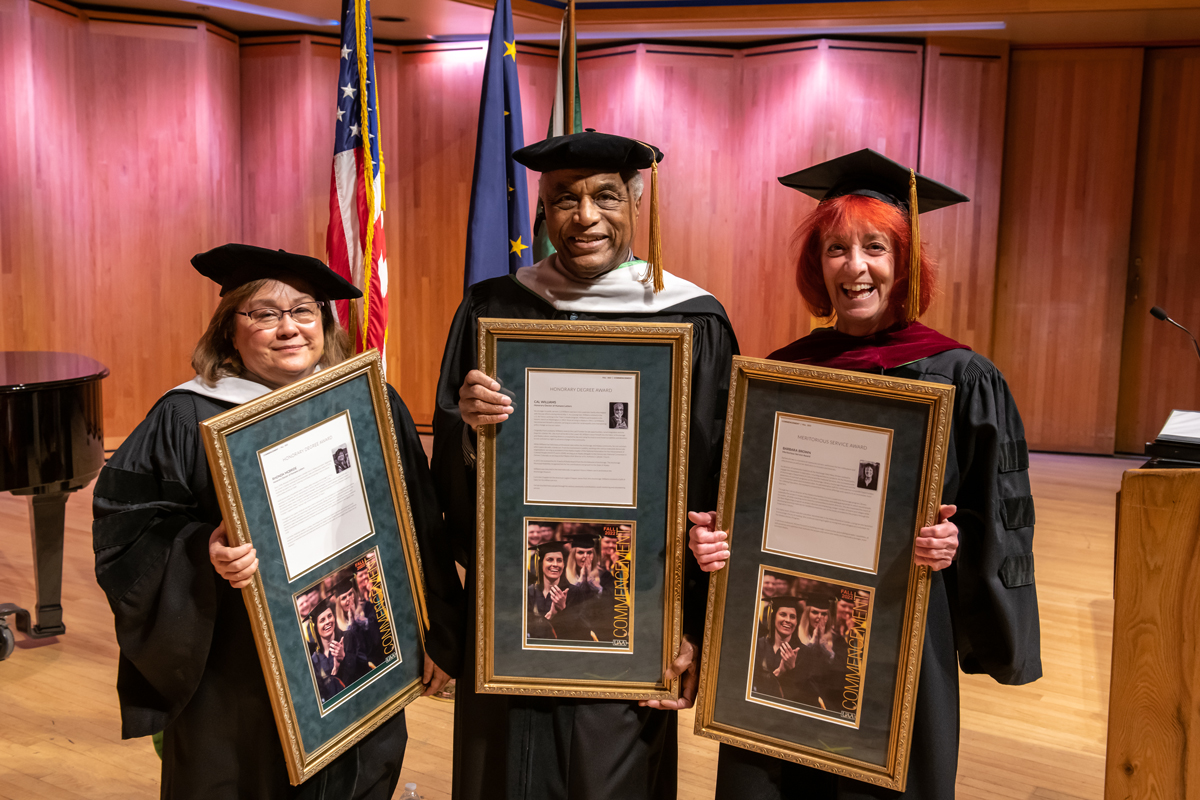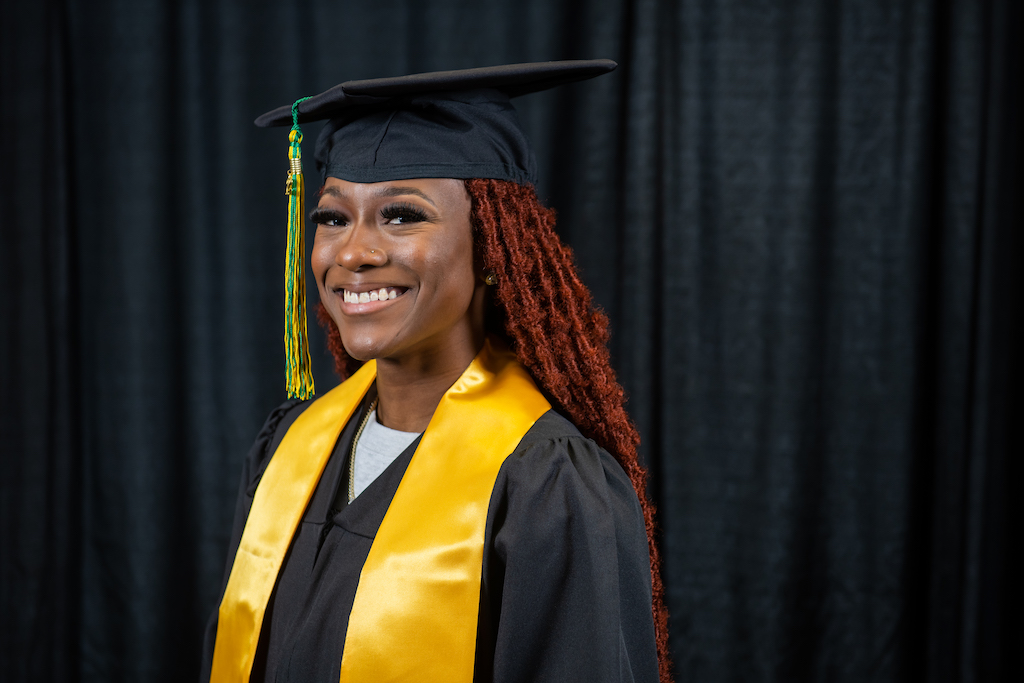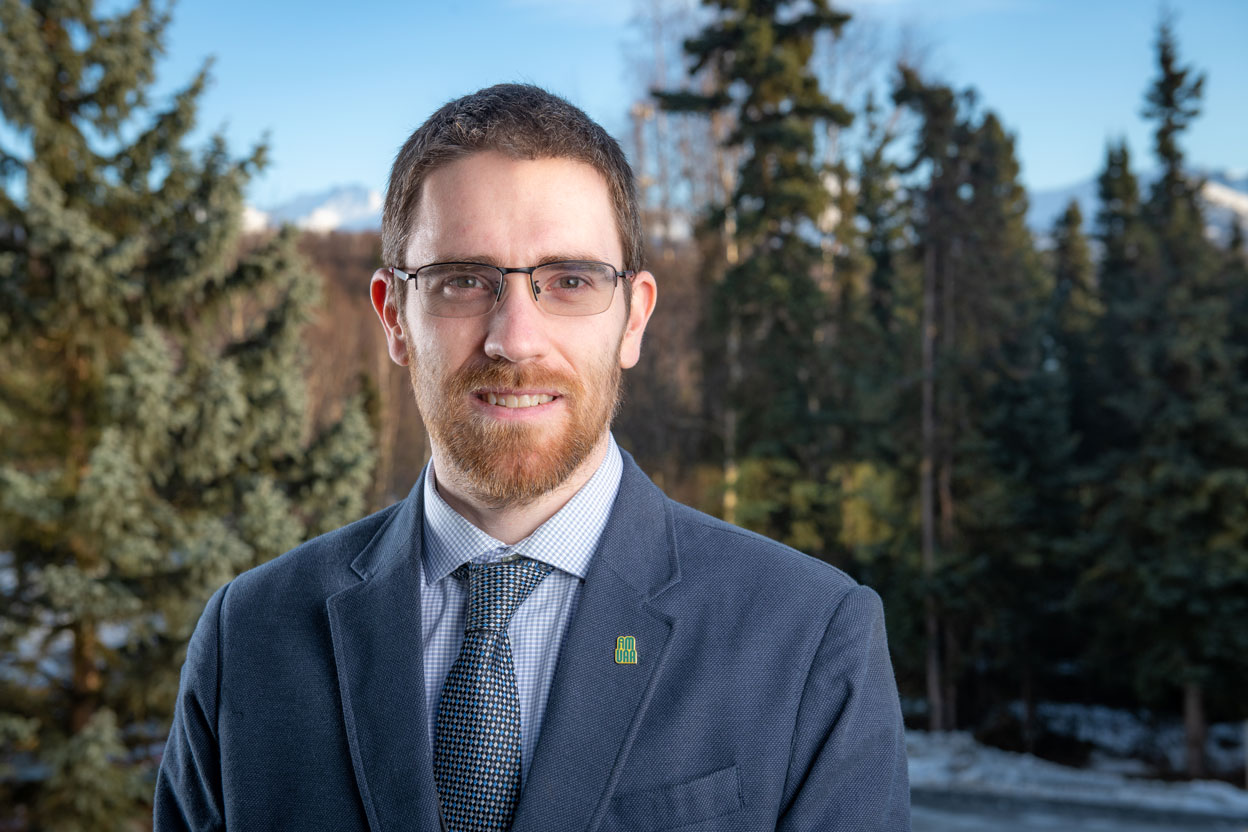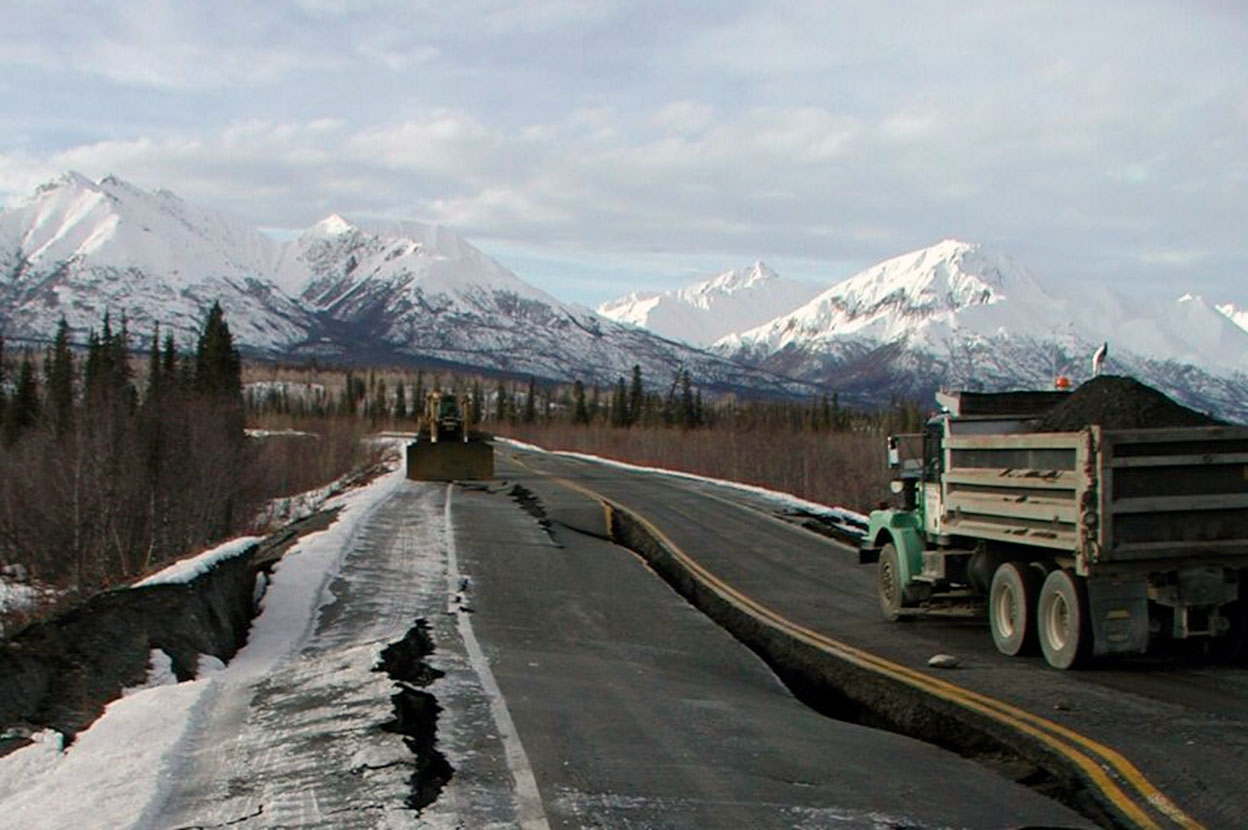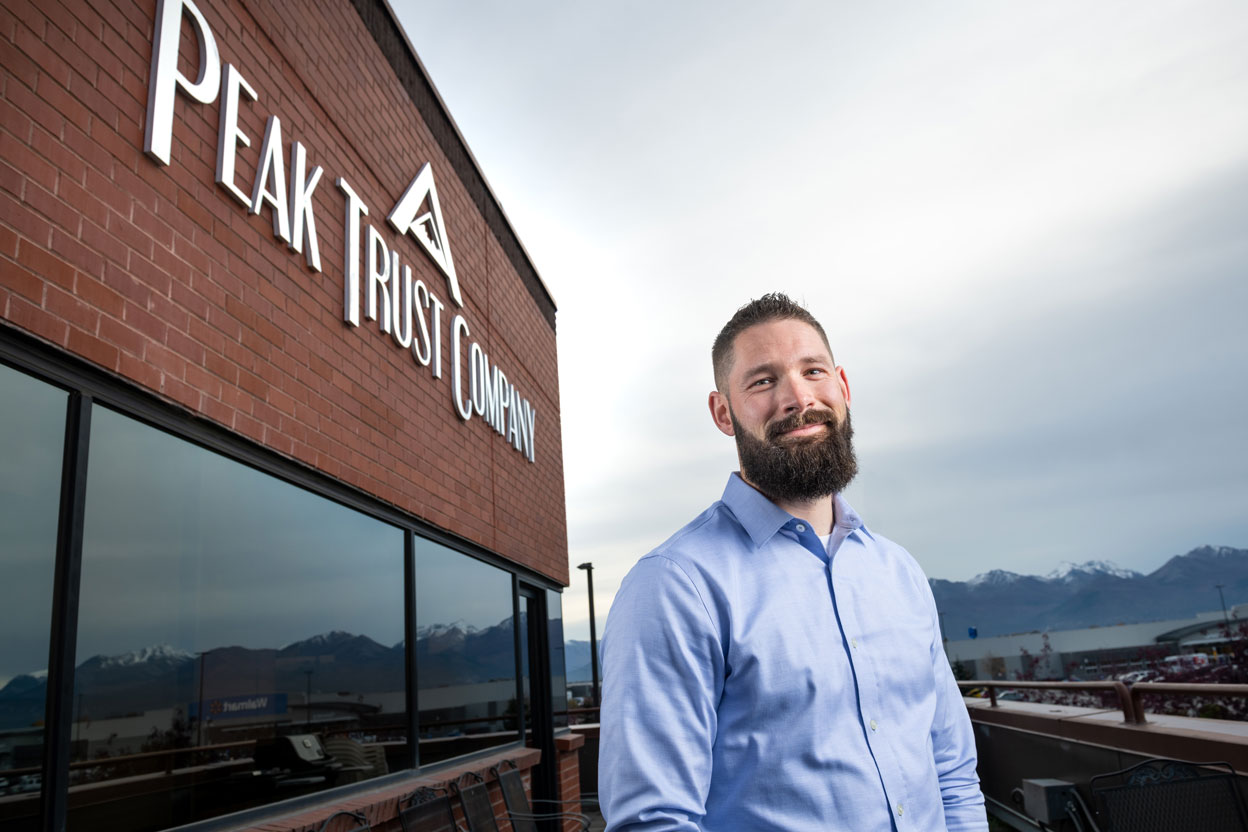Undergrad research training leads UAA alum to Sandia National Labs
by Joe Selmont |
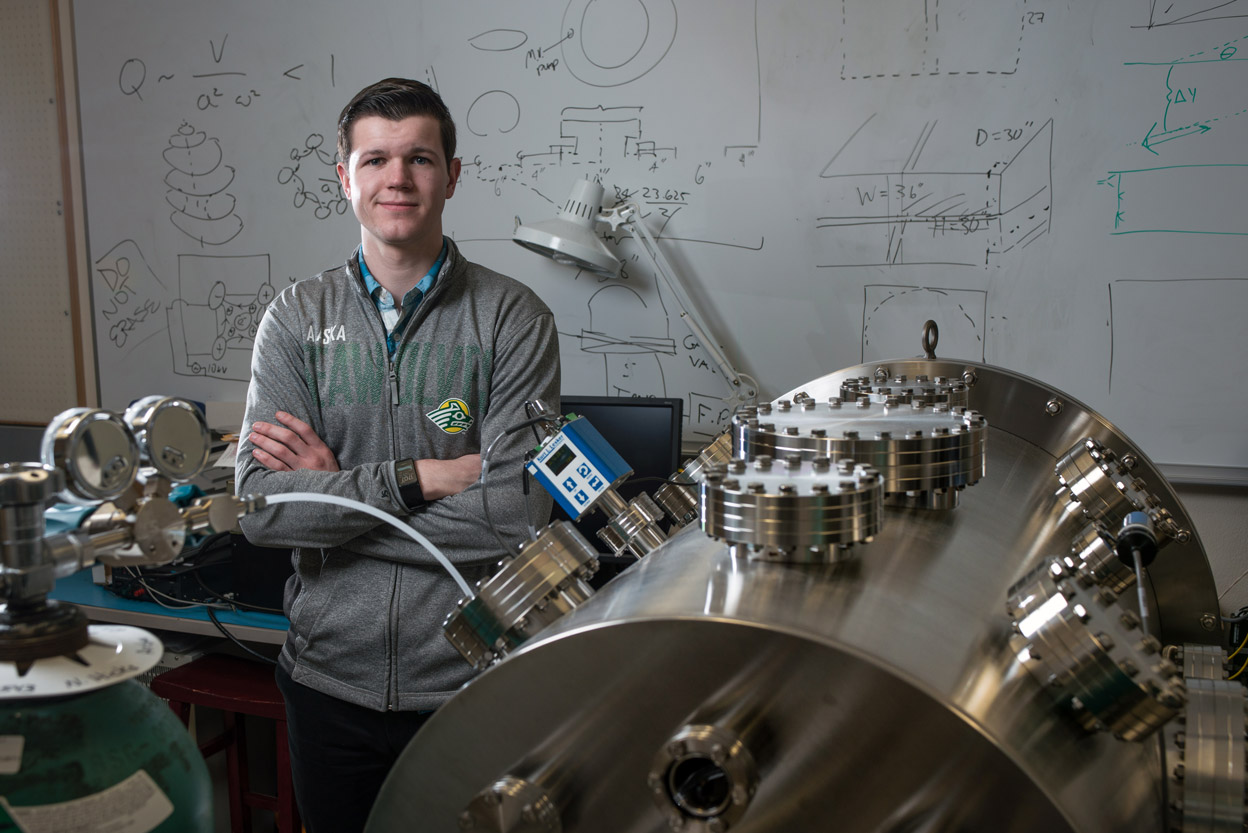
For Peter Renner, the last four years have felt like sprinting a marathon. He went into Texas A&M’s mechanical engineering Ph.D. program in 2018, right after graduating from UAA, and just four years later he is now a postdoctoral fellow at Sandia National Laboratories in Albuquerque, New Mexico. That means he blasted through his coursework, exams and dissertation in practically record time — even with the coronavirus pandemic and a newborn daughter thrown into the mix.
“It was a bit of a struggle, especially with everything else going on,” Renner said. “I didn’t get a ton of sleep.”
But it was all worth it, according to Renner, who is now contributing to 3D printing and corrosion research at Sandia, just one of three National Nuclear Security Administration research and development labs in the country. About 60% of Sandia’s nearly $4.5 billion budget and half of its 15,000 employees are focused on the mission of nuclear deterrence.
“Basically, Sandia is responsible for the design and development of all the non-nuclear components in nuclear weapons, and also for developing strategies and technologies to deal with nuclear waste,” Renner said. “It’s a really exciting place, a world-class center with technologies that are nowhere else in the world.”
And Renner worked hard to earn a spot at Sandia.
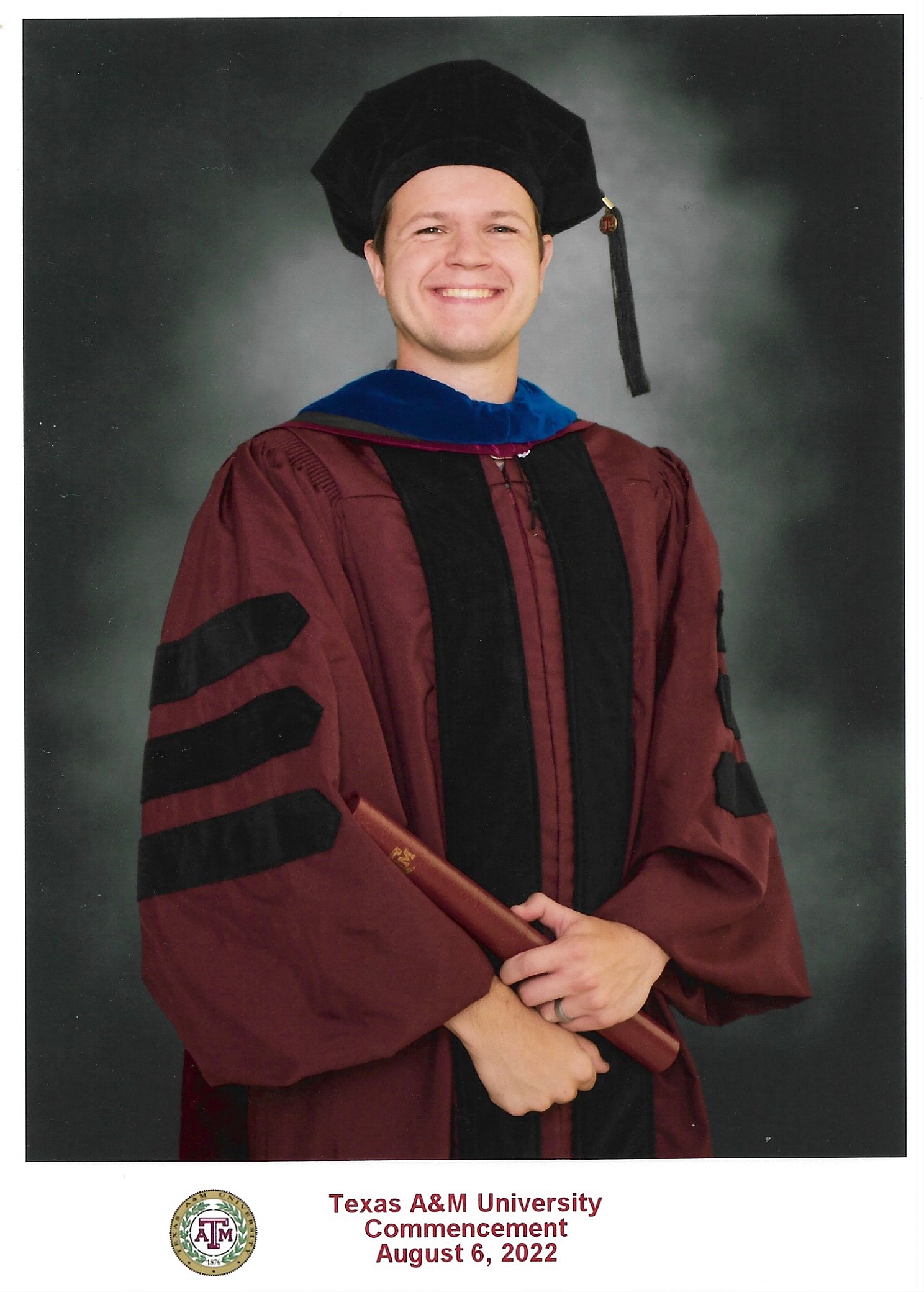
During his time at Texas A&M, he continued a line of research that he began as an undergraduate assistant in UAA’s Plasma Research Laboratory. His dissertation focused on how plasma can be used in 3D printing. Plasma is essentially ionized gas, or gas that has been infused with enough energy to free electrons from atoms or molecules. Renner pointed out that the northern lights are a well-known example of plasma in the real world.
Renner sought to develop a new 3D printing technique. Rather than manufacturing items from scratch, he used plasma to superheat metals and quasicrystalline alloys and then applied them as a coating to pre-manufactured items. Normally, 3D printing requires a perfectly flat surface to build up an object layer by layer, but the technique Renner developed enabled him to 3D print the coatings onto uneven objects.
“It might not sound like it would make a big difference,” said Renner, “but coating weaker objects, which are often easier and less expensive to produce, with materials that have very high strength and hardness like quasicrystals, means that you could potentially save resources and still put out a high-quality product.”
While there are currently no commercial uses for Renner’s technique, it has a lot of potential. Using an example that’s pertinent to Alaska’s economy, he mentioned that the oil and gas industry could one day use this technique to strengthen their pipelines and other infrastructure. They could even do it in the field on equipment that’s already installed, because Renner’s technique is portable. This could increase the lifespan of infrastructure that’s subjected day and night to Alaska’s extreme climate.
In his new role at Sandia, Renner’s research is similar — specifically, he studies the degradation mechanisms of metals and alloys that can be used in 3D printing — but he now has access to much fancier equipment. For example, he regularly uses a FIB SEM, or a focused ion beam scanning electron microscope, to look at extremely thin material samples.
“We’re talking one billionth of a meter,” Renner said. “I can look at a sample that might be only a hundred atoms thick.”
At the moment, Renner’s research is not directly related to Sandia’s mission of nuclear deterrence, though he could see his work moving in that direction. The degradation mechanisms he studies could prove valuable to other research related to the storage of nuclear waste. To prevent contamination, nuclear waste containers need to be able to survive for thousands of years, so understanding which materials can hold off corrosion and other forms of degradation for millennia is vital to the health and wellbeing of the environment and humanity.
“That’s one of the things that really inspires me about this work,” Renner said. “At a private company, so much of what you do is product development, basically earning money for shareholders. But at a lab like Sandia, I’m focused on national security and fundamental science. I get to work on research that could lead to major breakthroughs for our society.”
Renner credits much of his success to the time he spent at UAA. He doesn’t think he would have taken this route without the support and guidance of faculty members like Dr. Nathaniel Hicks of the Department of Physics and Astronomy, who runs the Plasma Physics Laboratory, and Dr. Matt Cullin of the Mechanical Engineering Department, who set Renner on the path of studying materials science and corrosion.
“Overall, UAA did a really good job of preparing me for a career in research,” Renner said. “I’m grateful for the experiences I had, and the people who helped me get to where I am. I don’t think I would’ve taken this path without them.”
When asked to reflect on Renner’s time as an undergraduate student at UAA and his success in the field of corrosion research, his former professor Dr. Cullin said, “It’s just huge to say we have a UAA graduate that’s accomplished everything Peter’s done, a student who’s gone as far as he has, and in such a short time. We are just massively proud of him. We saw how driven he was. We knew he would go on to make a big impact. And I have a feeling this is only the start for Peter. I can’t wait to see where his career goes next.”
 "Undergrad research training leads UAA alum to Sandia National Labs" is licensed under a Creative Commons Attribution-NonCommercial 4.0 International License.
"Undergrad research training leads UAA alum to Sandia National Labs" is licensed under a Creative Commons Attribution-NonCommercial 4.0 International License.










